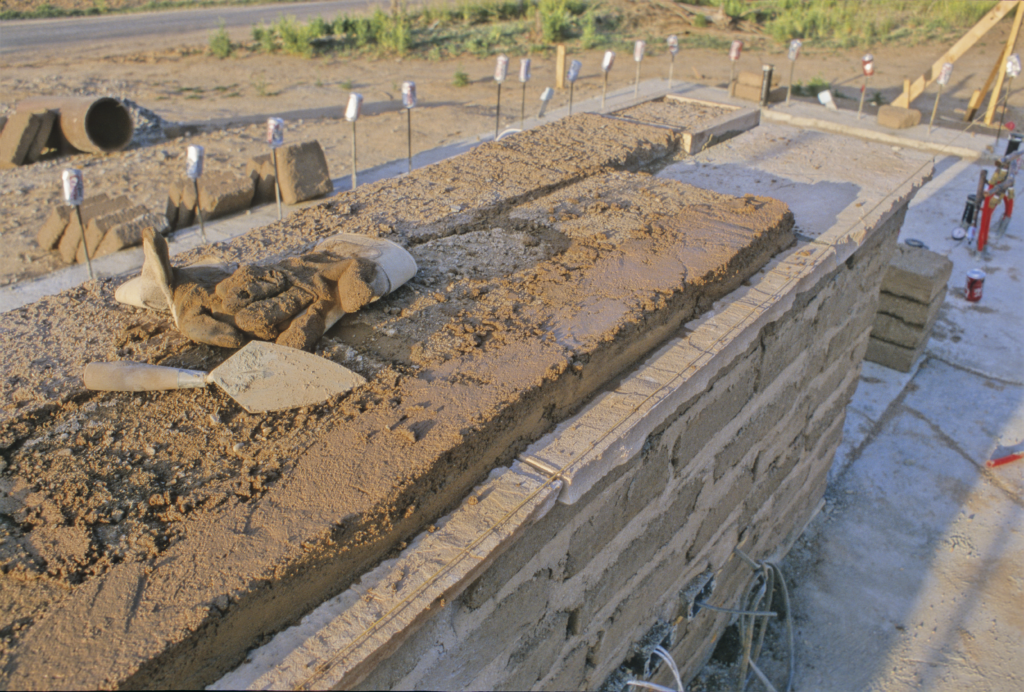
Thick and heavy walls absorb and store heat, unlike conventional wood-stud walls, and even straw bale walls. These are called thermal mass walls. If thick and heavy walls are used in the interior of a straw bale house, the efficiency of the home is improved dramatically over using only straw bale walls (results will vary depending on the local climate).
The thermal mass walls I used were made of adobe bricks. Adobe is mud that has been poured into a form and then dried in the sun. Adobe and other earthen materials are about as ecologically sound as you can get. These thick adobe walls are a very important part of the heating and cooling system for the home. They absorb excess heat in the summer to keep the home comfortable. In the winter the adobe walls passively store the heat from the sun during the day in order to keep the house warm at night. They key is to use highly insulated straw bale exterior walls combined with thick thermal mass interior walls.
Watch the step-by-step process of building adobe thermal mass walls from our Building With Awareness YouTube and Video channels.